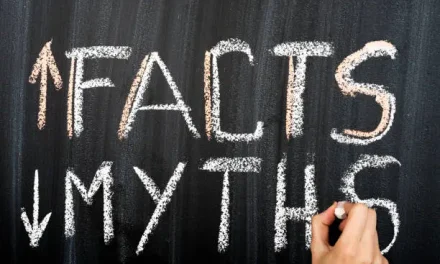Search Engine Optimization (SEO) is a long-term strategy that plays a critical role in helping your business gain visibility, increase organic traffic, and drive conversions. However, SEO is not a quick fix. It’s an ongoing process that involves optimizing your website, content, and technical infrastructure to rank higher in search engine results pages (SERPs).
Despite the best efforts, many businesses find themselves asking, “Why is my SEO not working?” or “Why my SEO is not working?” even after months of implementing strategies. The reality is that SEO is complex, and there are numerous factors that can contribute to poor results. Whether it’s low website traffic, poor keyword rankings, or a lack of conversions, there could be a variety of reasons for these shortcomings.
In this article, we’ll break down some of the most common reasons why your SEO might not be working and offer actionable solutions on how to fix them. With the right approach, you can optimize your digital presence, improve your rankings, and ultimately, achieve your business goals.
Reasons Why Your SEO is Not Working (And How to Fix Them)
1. Poor Keyword Selection

One of the most fundamental reasons why your SEO is not working is the improper selection of keywords. Choosing the right keywords is essential because they form the foundation of your SEO strategy. If you’re targeting keywords that are too competitive or irrelevant to your audience’s needs, your efforts will fall short. Additionally, failing to optimize for long-tail keywords—specific phrases that drive highly targeted traffic—can hurt your SEO performance.
How to Fix It:
- Conduct Thorough Keyword Research: Use tools like Google Keyword Planner, Ahrefs, or SEMrush to find keywords with high search volume but low competition. These tools can help you identify the best keywords for your business.
- Focus on Long-Tail Keywords: Long-tail keywords, while having lower search volume, are more targeted and often have a higher conversion rate. For example, instead of targeting “shoes,” target “best running shoes for flat feet.”
- Analyze Competitor Keywords: Take a look at what your competitors are ranking for and identify keyword gaps you can capitalize on.
2. Lack of Quality Content
Content is one of the most critical components of SEO. If your content is thin, outdated, or simply doesn’t answer the needs of your audience, your SEO strategy won’t produce the desired results. Google prioritizes high-quality, authoritative content that is relevant and helpful to users. If your content lacks depth or fails to engage, it will struggle to rank well in search results.
How to Fix It:
- Create High-Quality Content: Focus on producing detailed, well-researched, and engaging content that answers your target audience’s questions. The content should provide value and be easy to read and navigate.
- Optimize for User Intent: Ensure that your content matches user intent by understanding the queries your audience is searching for and aligning your content with their needs.
- Update Old Content: Review your existing content and refresh it with updated information, new insights, and improved formatting to keep it relevant and valuable.
3. Technical SEO Issues

Technical SEO refers to the behind-the-scenes elements that affect your website’s visibility, such as site speed, mobile optimization, and structured data. If your website has technical issues, such as slow loading times, broken links, or a poor mobile experience, your search engine rankings will suffer. Poor technical performance can also lead to crawl errors, where search engine bots are unable to properly index your site.
How to Fix It:
- Run a Technical SEO Audit: Use tools like Google Search Console, Screaming Frog, or GTmetrix to identify technical issues on your site. These tools will help you detect crawl errors, broken links, and other technical problems that may be hindering your SEO efforts.
- Optimize Site Speed: Improve your website’s loading times by compressing images, leveraging browser caching, and optimizing your server response time.
- Ensure Mobile Optimization: With mobile-first indexing becoming a priority for Google, make sure your website is fully optimized for mobile devices. Use responsive design to ensure a seamless experience for mobile users.
4. Unoptimized On-Page SEO
On-page SEO refers to the optimization of elements on your website, such as title tags, meta descriptions, header tags, and internal links. If these elements aren’t optimized correctly, search engines will struggle to understand the content of your page, impacting its rankings. For example, missing or poorly written title tags can significantly reduce your visibility in search engine results.
How to Fix It:
- Optimize Title Tags and Meta Descriptions: Write compelling and keyword-rich title tags and meta descriptions for each page. Make sure they accurately describe the content and encourage clicks from users.
- Use Header Tags Effectively: Structure your content with header tags (H1, H2, H3) to break up the text and make it easier for search engines to understand the hierarchy of your content.
- Add Internal Links: Link to relevant pages within your website to help both users and search engines navigate your content more efficiently.
5. Backlink Issues

Backlinks are one of the most influential ranking factors in SEO. If your backlink profile is weak or filled with low-quality links, it can negatively impact your rankings. Having a strong portfolio of high-quality backlinks from authoritative sites helps to improve your site’s credibility and ranking potential.
How to Fix It:
- Build High-Quality Backlinks: Focus on acquiring backlinks from authoritative websites within your niche. Reach out to industry influencers, bloggers, and other relevant sites for guest posting opportunities and link-building partnerships.
- Monitor and Disavow Toxic Links: Use tools like Google Search Console to monitor your backlinks and disavow any toxic or spammy links that could harm your site’s reputation.
- Leverage Content Marketing: Create high-quality content that naturally attracts backlinks from reputable sources. Think about infographics, case studies, or research that others in your industry would find valuable.
6. Ignoring User Experience (UX) and Engagement
User experience plays a major role in SEO rankings. Google now takes user signals such as bounce rate, time on site, and click-through rate (CTR) into account when determining rankings. If your website has a high bounce rate or poor engagement metrics, it will likely see a drop in rankings.
How to Fix It:
- Improve Website Navigation: Ensure your website has clear and intuitive navigation that allows users to find what they need quickly and easily.
- Optimize for Mobile: Given the increasing number of users browsing on mobile devices, your site should be fully mobile-optimized. Test it across various devices and ensure a smooth experience.
- Improve Engagement with Multimedia: Include images, videos, and interactive elements to make your content more engaging and encourage users to spend more time on your site.
7. Lack of Local SEO Optimization

If you’re a local business and you’re not focusing on local SEO, you’re missing a huge opportunity. Local SEO helps businesses appear in search results when users search for services or products within a specific geographic area.
How to Fix It:
- Claim and Optimize Your Google My Business Listing: Ensure your business is listed on Google My Business and that your information is accurate and up-to-date. Include your address, phone number, website, hours of operation, and services.
- Use Local Keywords: Include location-specific keywords in your content and meta tags to improve visibility in local searches.
- Get Listed in Local Directories: Ensure your business is listed on local review sites, industry directories, and other relevant platforms to build authority and visibility in your local area.
Let Marketing Technology Help You
As you can see, there are many reasons why your SEO is not working effectively, but the good news is that these issues are all solvable. Whether it’s poor keyword selection, weak content, technical issues, or lack of backlinks, implementing the right SEO strategies can turn things around. At Marketing Techology, we specialize in helping businesses optimize their digital presence and achieve SEO success.
Our SEO services and content marketing solutions are designed to address the unique challenges of today’s competitive digital landscape. If you’re struggling with why my SEO is not working, let us help you get back on track. Our team of experts can help you create a comprehensive SEO strategy tailored to your business needs, ensuring your website reaches its full potential.
Frequently Asked Questions
Could competition be why my SEO isn’t working?
Yes, competition can certainly affect your SEO performance. If you’re targeting highly competitive keywords, it can be difficult to rank without a strong and comprehensive SEO strategy. Focusing on long-tail keywords and creating unique, high-quality content will give you an edge over competitors.
Why isn’t my backlink strategy working?
Your backlink strategy may not be effective if you’re acquiring low-quality links, or if the links are irrelevant to your industry. Focus on quality over quantity, and aim to earn backlinks from authoritative and relevant websites.
How do technical SEO issues affect my performance?
Technical SEO issues like slow page load times, broken links, and poor site structure can significantly harm your SEO performance. These issues can make it harder for search engines to crawl and index your pages, and can create a poor user experience, leading to lower rankings and higher bounce rates.





